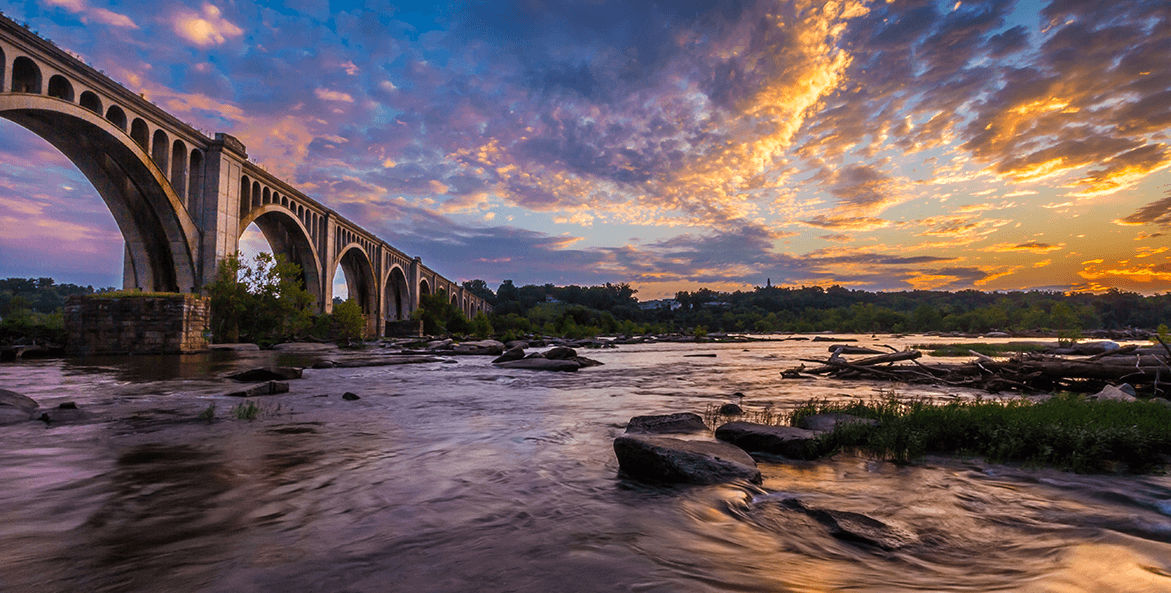This op-ed was originally published in the Richmond Times-Dispatch
Even before the November election it was clear that the environment is a top issue for Virginia voters, highlighted both in candidate campaigns and polls. In our region, all environmental issues are linked to the Chesapeake Bay.
When the commonwealth supports programs to clean up the bay and its rivers, it also is taking steps to address climate change, improve the quality of life in communities and create green jobs.
Under the Chesapeake Clean Water Blueprint, Virginia, neighboring states and federal partners have worked together for years to restore the bay and its waterways. This cooperative effort is so remarkable that it’s being watched around the world as a model for environmental success.
Initial results are promising. The bay is finally improving. Over time, the dead zone is getting smaller and the oyster industry is burgeoning.
Our newly elected leaders in Richmond now face a turning point. We have a pivotal opportunity for major environmental wins. To keep it from slipping away, work must greatly accelerate to address growing threats from climate change and meet Virginia’s blueprint commitments to put practices in place by 2025 to restore local rivers and streams.
The blueprint tackles climate change in many ways. Notably, it calls for Virginia to join the Regional Greenhouse Gas Initiative to help reduce nitrogen pollution to the air and water and address climate change. The blueprint also urges greening our cities with more trees, using living shorelines, and improving management of livestock and fertilizer on farms. These and many other blueprint initiatives will reduce flooding, sequester carbon, lower energy usage and fortify communities facing sea level rise.
In fact, a report to the United Nations Climate Action Summit found that nature-based solutions like these could provide more than one-third of the carbon reductions needed in the next decade.
Virginia’s Stormwater Local Assistance Fund provides matching grants to localities across the commonwealth for projects that fight polluted runoff and provide many other benefits. For example, in Fairfax County’s Wakefield Park, Accotink Creek suffered from steep eroding streambanks. The restoration project reconnected the stream with the original forested floodplain, creating wetlands that filter pollution and provide a home for wildlife. After incorporating feedback from residents, the project also included a new bridge and stream crossings for joggers, hikers and cyclists.
From the Shenandoah Valley to Hampton Roads, this fund has reduced pollution, mitigated neighborhood flooding and created green spaces while also taking up carbon. These projects also put environmental engineers and contractors to work, creating green jobs. In the countryside, farmers are reducing pollution and combating climate change through conservation practices.
Fifteen years ago, Bobby Whitescarver and his wife, Jeanne Hoffman, planted a buffer of trees and native plants along the Middle River on Hoffman’s farm in Augusta County. They also fenced cattle out of the river, stopping erosion and pollution from animal waste. Now the trees have grown into a forest that takes up greenhouse gases and absorbs pollution before it reaches the river, which is measurably healthier.
When Virginia invests generously in its agricultural cost-share program, more farmers install these planet-saving practices. What’s more, the money supports local businesses, from tree nurseries to contractors who install fences.
Virginia is also continuing its long-running work of modernizing plants that treat sewage from cities, towns and suburbs. By installing the right technology, many wastewater treatment plants have dramatically reduced the amount of pollution they send into rivers. This wouldn’t have been possible without years of significant, reliable state investments in the Water Quality Improvement Fund.
But not everyone is reaping these benefits. Some wastewater facilities lag behind in making upgrades. Nobody wants to swim or fish downstream of a polluting plant.
To ensure Virginians enjoy clean water in the James as well as the Potomac, the Shenandoah as well as the Rappahannock, the commonwealth must continue upgrading wastewater treatment with a balanced level of effort across all regions.
In short, with the Clean Water Blueprint, Virginia has a clear path for action on the environment and climate.
So let’s build on the progress by supporting key blueprint measures like the Regional Greenhouse Gas Initiative and ramping up investments in important water quality programs: Virginia’s Stormwater Local Assistance Fund, Agricultural Cost-Share Program and the Water Quality Improvement Fund.
Now is the time to reach out to your legislators. This session we can implement the blueprint, meaningfully address climate change, support green jobs and ensure clean water for future generations.
Peggy Sanner, CBF's Virginia Assistant Director and Senior Attorney
Issues in this Post
Chesapeake Clean Water Blueprint Agriculture Chesapeake Clean Water Blueprint Climate Change Dead Zones Eastern Oysters Runoff Pollution Virginia's Agricultural Cost-Share Program Virginia's Stormwater Local Assistance Fund Water Quality CBF in Virginia



